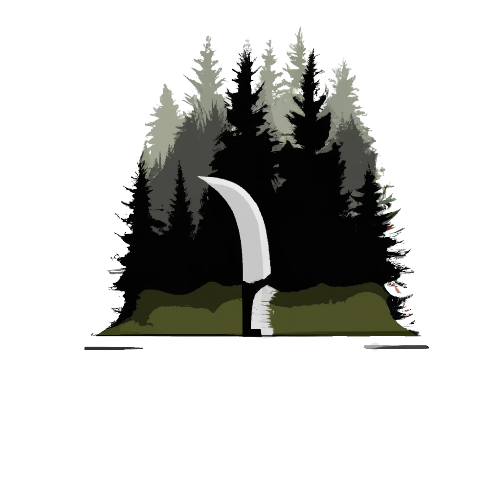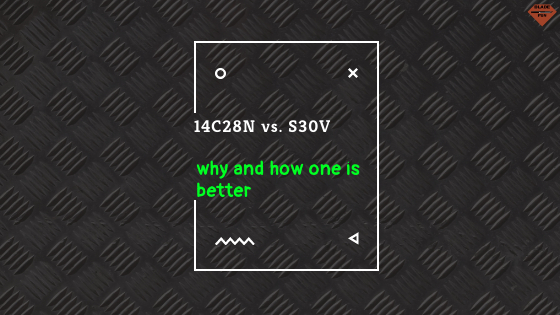S30V and 14C28N are two very common steels on the market. And with them being very common, it only makes sense to compare them to see which one is the better. So without further ado, here is which steel is better:
S30V is going to have better edge retention, better corrosion resistance, better hardness, and will be a better all-around steel. However, S30V will be harder to sharpen and more expensive compared to 14C28N. 14C28N is a good steel for tools like scalpels, but S30V is considered a premium steel.
With the short answer out of the way, we can take a closer look at each steel individually, when and why you would want one steel over the other, and how one steel is better than the other.
S30V
S30V is a premium steel that is used by many big brands like Benchmade, Spyderco, and Kershaw. It is used because it is known for being a good knife steel.
S30V’s full name is CPM-S30V and the CPM stands for Crucible Particle Metallurgy. Crucible Particle Metallurgy is a process that refines the steel grains, which makes the edge retention and toughness more uniform–reducing the chances of soft spots.
The S in S30V stands for stainless, this is because S30V is a stainless steel. The V in S30V stands for vanadium, which is added to the steel to improve strength and wear resistance.
Here is what S30V is made of:
- 1.45% carbon
- 14% chromium
- 2% molybdenum
- 4% vanadium
Each of those do different things: The carbon increases strength (it’s important to note that at high levels, carbon leads to brittleness, which means easy chipping and breaking), the chromium increases corrosion resistance, the molybdenum increases hardenability (which basically means that it’s easier to harden, and thus manufacture), and vanadium improves wear resistance and strength.
14C28N
14C28N is a middle-tier steel that is mainly used in entry-level knives. It is a steel that in general has good corrosion resistance, edge retention, and hardness–but not compared to S30V. S30V is considered a premium steel; 14C28N is considered an upper-middle-tier steel at best.
The biggest problem with 14C28N is its toughness. While it may work fine for everyday uses (cutting open boxes, shaving down wood, cutting soft objects, etc.) it does not work well for heavier duty tasks (batoning, cutting through cans, smashing rocks, etc.).
Here is what 14C28N is made of:
- 0.62% Carbon
- 14% Chromium
- 0.6% Magnesium
- 0.2% Silicon
- 0.02% Phosphorus
- 0.01% Sulfur
- 0.11% Nitrogen
Magnesium, silicon, and sulfur will increase steel strength, much like carbon.
Which one is better?
Now that we have taken a closer look at each of the steels, we can see which one is better.
S30V is the all-around better option–especially for tasks that are harder on your knives. If you’re going to be doing things that are rough on your knives, go with S30V.
For EDC (EveryDay Carry), either steel will work. Even though S30V has better edge retention, they will both work fine for everyday stuff. As long as you have a good sharpener and are fine with having to touch up your knife every now and then, 14C28N will work just fine.
14C28N is also cheaper than S30V. So, in that department, it wins against S30V.
Our favorite knives in each steel
Since we have taken a look at each steel, found out which steel is better, and found out when you would want one steel over the other, it only makes sense to look at what knives are best in each steel.
Kershaw Leek (14C28N)
The Kershaw Leek is one of the best entry-level knives out there. It has assisted opening, making it easy to open without much force. It has a 3-inch blade and a stainless steel handle. It also has a lock near the bottom of the handle. It basically has everything you could want in a knife.
Check out this knife here (link to Amazon).
Benchmade Griptilian (S30V)
The Griptilian is an ideal higher-tier knife. It has a buttery smooth, super easy opening thanks to Benchmade’s AXIS lock. It has a 3-inch blade that can cut through anything you need to. The only downside to this knife is that it’s pretty pricey.
Check out this knife here (link to Amazon).
Conclusion
Unless you are going to be pretty hard on your knife, then it doesn’t really matter what you choose. If you are going to be hard on your knife, then you will want S30V. If you don’t have a lot of money to spend on a knife, you will want to go with 14C28N because it is cheaper.

